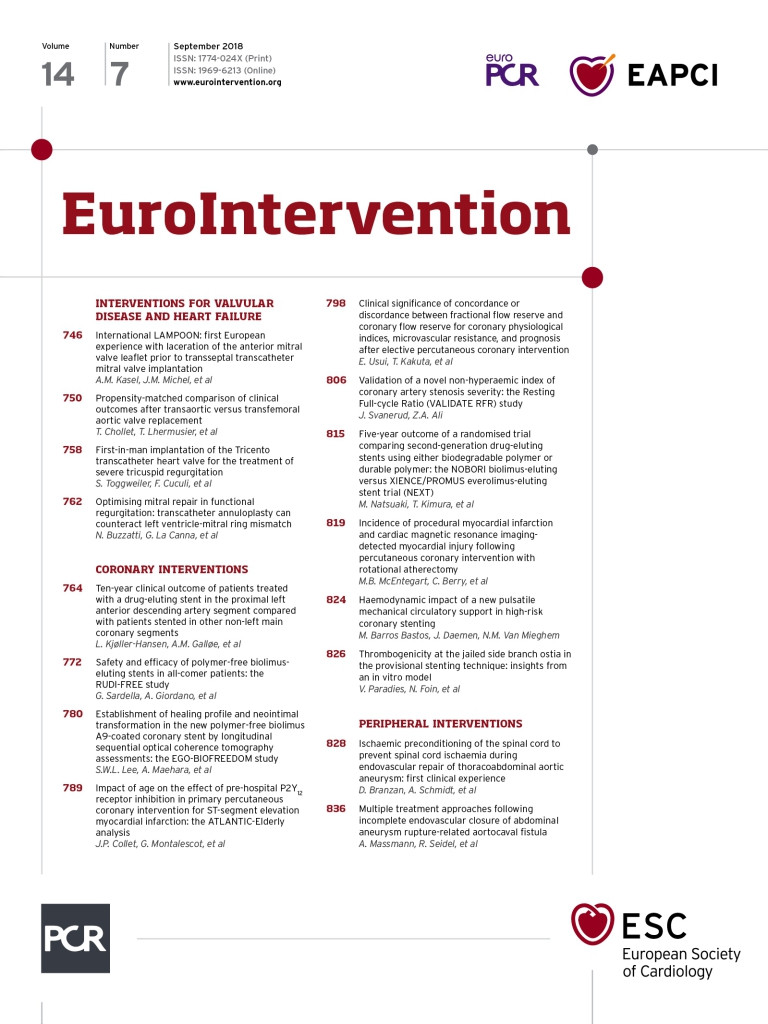
We appreciate the interest shown by Lauri et al in the PIONEER QFR substudy1. We analysed quantitative flow ratio (QFR) at three different time points (pre-procedure, post-procedure and at nine months after the index procedure) and compared the functional significance between the BuMA™ sirolimus-eluting stent (SINOMED, Tianjin, China) and Resolute™ zotarolimus-eluting stent (Medtronic, Minneapolis, MN, USA). There was no need for concern regarding preprocedural QFR because, at pre-procedure, mean diameter stenosis (DS) was 60.1±10.3% for BuMA and 60.7±10.8% for Resolute. Post-procedure and at nine months after the index procedure, mean DS ranged between 9% and 17%. As Lauri et al pointed out, QFR lacks evidence for feasibility in mild lesions; major QFR validation trials such as FAVOR pilot, FAVOR II China, FAVOR II Europe/JAPAN and the WIFI II trial excluded mild stenosis (%DS <30% by visual estimation). Visual estimation tends to overestimate stenosis compared to quantitative coronary angiography (QCA); therefore, lesions with mild stenosis (DS <30% on QCA) might have been enrolled in those trials.
The basic mathematical formula used in QFR, however, was developed and validated in non-stenotic and mild stenosis models. QFR calculation is based on the historically well-known formula that was first reported by Young et al2-4. This formula predicts a pressure drop across the stenosis by using minimum cross-sectional area, reference area, lesion length and flow velocity. Afterwards, Gould and colleagues simplified this formula as described below. This formula has already been validated in dog models of various degrees of stenosis (no stenosis, mild, moderate and severe stenosis)5:
∆p=FV+SV2
where F is the coefficient of pressure loss due to viscous friction and is dependent on the length, relative percent stenosis, and absolute diameter of the stenosis; S is the coefficient of pressure loss due to flow separation and is dependent on relative percent stenosis and the divergence angle of the stenosis (e.g., no stenosis F=0.193±0.067, S=0.0013±0.0029; mild stenosis F=0.272±0.172, S=0.009±0.0032).
Unlike QFR, the physiological assessment by FFR for mild stenosis has already been clinically applied. It has been demonstrated that FFR measured immediately after percutaneous coronary intervention is significantly associated with future adverse events6-8. In those studies, the cut-off values of FFR predicting target vessel failure ranged between 0.90 and 0.92, which is in line with QFR values in our study (QFR post procedure: 0.92±0.05 for BuMA, 0.93±0.05 for Resolute).
We believe that our approach is theoretically appropriate from the physiological point of view. As Gould et al reported in the dog model, subtle lumen loss does not impact on coronary blood flow if the stenosis remains mild (DS <50%)9. A small difference in LLL or %DS, even though it becomes statistically significant, does not have clinical significance when these parameters remain low.
Conflict of interest statement
J. Reiber is the CEO of Medis medical imaging systems bv, and has a part-time appointment at Leiden University Medical Center as Professor of Medical Imaging. The other authors have no conflicts of interest to declare.

